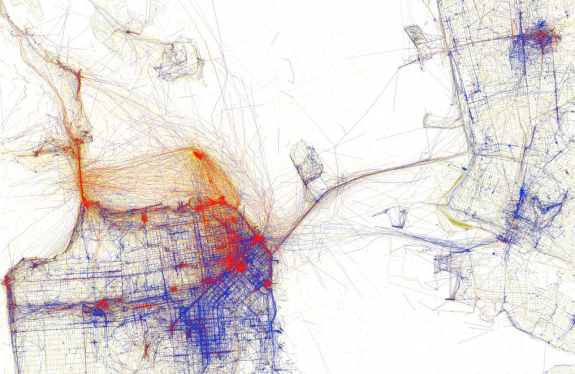The reason I wanted to share this video (beyond the fact that it's so amazingly awesome) is to let you in on a little secret... are you ready? Here it comes...
Data visualization is easy, and anyone with a computer can do it!
Now that you're all psyched to visualize some data, I should mention that I am being a bit misleading here... because it does require a bit of computer know-how, and sometimes (ok, almost always) takes a bit of tinkering with the data to find the best ways of boiling down to just the relevant information. But frankly, these things aren't all that hard to learn and aren't always necessary if we're just poking around to get a feel for the data, so none of these words of caution should give you much pause. Add to that the fact you can always hit up the internet for examples to
Figure 1. Tourist hot spots based on Flickr data. #1 of flowingdata's Top Ten Data Visualization Projects of 2010.
So here's the deal... there are some really cool data available from http://www.gapminder.org/, and I'm going to have a little free time these next few weeks in between birding trips, visiting family and friends, and doing thesis work. Assuming that free time stays free, I'm going to walk through an example or two of plotting some of this data in R. If you'd like to follow along, you'll need to download and install R on your computer, and if you don't already have software that can open excel spreadsheets, you'll also want to install something (free) like OpenOffice.
Sound good? Excellent! Feel free to share any questions or suggestions in the comments section below. Now hurry along and go install R!







